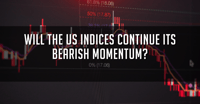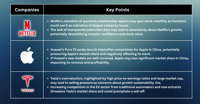Investors in Asia-Pacific continue monitoring the Covid-19 situation in India as the country continues to battle a deadly second wave of infections. Over the weekend, more than 400,000 daily new cases were registered for the first time.
Stocks in Asia-Pacific slipped on Monday, with major markets in China and Japan closed for the holidays. In Hong Kong, the Hang Seng Index led losses among the region’s major markets as it fell 1.48% by the afternoon. South Korea’s KOSPI shed 0.19% in afternoon trade. Over in Australia, the S&P/ASX 200 sat below the flatline.
In a bigger picture, inflation remains a key concern for investors. The latest U.S. data show fiscal stimulus contributed to driving the strongest monthly gains in personal incomes in records going back to 1946, and the Federal Reserve’s preferred gauge of prices rose by the most since 2018. Even though last year’s pandemic shock has skewed some data, such readings fuel speculation that central banks may start to withdraw support by trimming asset purchases.
Interest rates going forward will be led more by expectations on the tapering from the Fed rather than by inflation. Dallas Fed President Robert Kaplan, who’s not currently a voter on the rate-setting committee, said signs of excessive risk-taking suggest that it’s time to consider fewer bond purchases. His remarks contrast with those of Fed Chairman Jerome Powell.
Top U.S. financial officials are downplaying inflation risks. Treasury Secretary Janet Yellen said on the weekend that the demand boost from President Biden’s economic plan would spread over a decade.
Risk assets have continued to coast higher in recent weeks, underpinned by that old saw. If the music is playing, you need to keep dancing. The music in this case is the fiscal and monetary largesse deployed to bridge the economic abyss that was created when the pandemic hit. Jerome Powell made it clear last week that he is willing to be extremely patient, but later, a non-voting Fed president put tapering on the agenda. Similar dynamics may play out at other central banks, with investors likely to focus on many of the major releases this month for guidance on how close the monetary end game may be.
Australia’s central bank meeting on Tuesday could offer some hints on what may come from global policy makers, though they will presumably be cloaked by the usual steady-as-we-go RBA rhetoric. U.S. payrolls will loom even larger than normal this week. Before then, we get PMI readings for many of Asia’s economies, as well as Hong Kong GDP.













